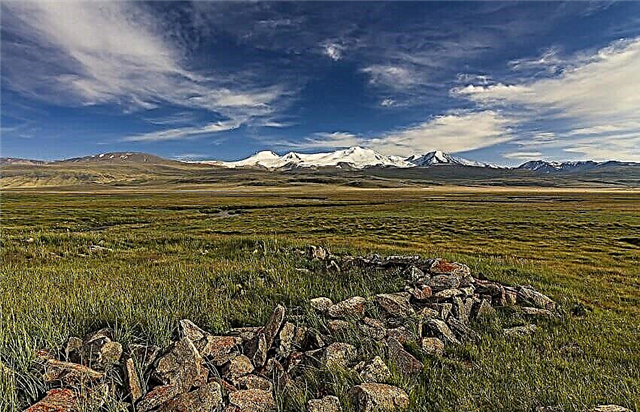The Giant's Causeway has several names, including the Giant's Causeway and the Giant's Causeway. Volcanic formations located in Northern Ireland are among the world's natural treasures, which is why a considerable number of tourists tend to look at the unusual cliffs.
Description of the Road of Giants
An amazing natural wonder from above resembles a sloping road that descends from the cliffs and goes into the Atlantic Ocean. Its length on the coast reaches 275 meters, and another 150 meters stretches under water. The size of each column is about six meters, although there are also twelve-meter columns. If you take a photo from the top of the cliff, you can see the honeycomb close to each other. Most pillars are hexagonal, but others have four, seven or nine corners.
The pillars themselves are quite solid and dense. This is due to their composition, which is dominated by magnesium and basalt iron with a quartz content. It is because of this that they are not subject to decay under the influence of the winds and waters of the Atlantic Ocean.
Conventionally, the natural structure can be divided into three sections. The first is called the Great Path. Here the columns have a cascade structure in the form of steps. To the bottom, they are aligned into a road up to 30 meters wide. Further there are Srednyaya and Malaya trails, which resemble protruding mounds. You can walk on their tops as they are flat in shape.
Another unusual area is Staffa Island. It is located 130 km from the coast, but here you can see columns similar to those that go under the water. Another interesting place for tourists on the island is Fingal's Cave, which is 80 meters deep.
Hypotheses about the origin of a miracle of nature
In the course of studying the Giant's Cause, scientists put forward various hypotheses about where such columns came from. Popular versions include the following explanations:
- the pillars are crystals formed on the seabed once in Northern Ireland;
- the pillars are petrified bamboo forest;
- the surface was formed as a result of volcanic eruptions.

It is the third option that seems closest to the truth, since it is believed that the magma released to the surface begins to crack slowly during a long cooling period, which makes the layer look like a honeycomb extending far into the earth. Due to the basalt base, the magma did not spread over the ground, but lay in an even layer, which later became similar to columns.
You will also be interested in the Altamira Cave.
Despite the fact that this hypothesis seems to scientists the most reliable, it is not possible to test it for truth, since hundreds of years must pass before a similar effect can be repeated in practice.
Legend of the appearance of the Giant's Road
Among the Irish, the story of the giant Finn Mac Kumal, who had to fight a terrible enemy from Scotland, is being retold. To connect the island with Great Britain, the resourceful giant began to build a bridge and was so tired that he lay down to rest. His wife, hearing that the enemy was approaching, swaddled her husband and began to bake cakes.
When the Scotsman asked if Finn was sleeping on the shore, his wife said that it was just their baby, and the husband would soon arrive for the decisive fight. The resourceful girl treated the guest to pancakes, but first baked cast-iron pans in them and left only one for Finn without an unusual additive. The Scotsman could not bite a single cake and was extremely surprised that the "baby" ate it without difficulty.
Thinking how strong the father of this child must be, the Scotsman hastened to escape from the island, destroying the bridge built behind him. The amazing legend is liked not only by the locals, but also fuels the interest in the Giant's Causeway among tourists from different parts of the world. They enjoy walking around the area and enjoying the scenery of Ireland.









